Walking Through Hell and Coming Out the Other Side
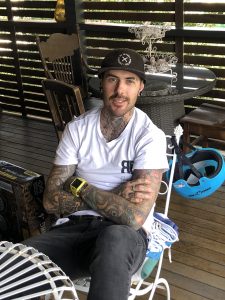
Eight months on from the Black Summer Bushfires that tore across the South Coast of New South Wales, the painful memories of one of the darkest chapters in modern Australian history remain. Trees left twisted and charred from the raging inferno continue to line the Princess Highway, yet like the phoenix, life finds a way to rise from the ashes. From the very same trees burnt to a crisp, leaf filled limbs shoot from the bases and for the residents calling this beautiful stretch of land, home, they are starting to move forward and leave the summer from hell behind them.
For 26-year-old chef and Rural Firefighting Service (RFS) volunteer, Chase Organ, the memories of what he faced are still fresh in his mind.
‘This year was pretty intense. The Tianjara fire was eye-opening. It was my first, real big fire, but the Currowan one, honestly, it was scary, especially when they joined.’
An 8-year veteran who has volunteered for the RFS, states that when the two fire fronts merged on the 21st December and created an 80-kilometre wall of flames, it was unlike anything he had ever seen in his life. A nightmarish scenario, sounding more like a scene from a Hollywood blockbuster than what the heroes on the frontline bravely charged in to battle, day in and day out.
‘When the pager goes off and I get down to the station, get geared up and hop on the truck, my adrenaline’s racing, but at the same time I’m keeping a clear head, going over protocols, like SMEAC (Situation, Mission, Execution Administration and Command) and LACES (Lookouts, Awareness, Communication, Escape Route and Safety Refuge) and they’re just acronyms that put you in the mindset of what we’re going to face. But personally though, I’m thinking “Ah shit, am I going to come home?” ’

A feeling Chase is not alone in having, as other RFS volunteers have begun speaking out about feeling forgotten in the months after the summer bushfires and not receiving adequate emotional support for the horrors they battled on a daily basis.
It’s not all bad though, as Chase recalls what would affectionately be known as the Mongarlowe “Mosquito Army.”
‘Crews were in short supply, trucks were scattered and a lot of people who aren’t even in the RFS were putting their hand up and one thing that really stuck with me was all the local cowboys. They were throwing 1000 litre water containers on the backs of their utes and went around to all the larger, back properties that our trucks couldn’t get into, and I was just amazed. They’re literally, potentially saving their mates’ properties.
But when things get bad, they get really bad, as Chase elaborates.
‘I’ve seen a lot of things out there, one thing though that really sticks with me is when I was on comms (Communication). We got an emergency call and I heard from a man and his wife who were very badly burnt, and to take that call was extremely traumatic and knowing they had just been on fire and not knowing if they’re going to make it or if we can get them the help they need in time. There’s also that voice in the back of my head saying, “That’s potentially someone dying and I’m hearing their last words.” Thankfully they did make it, but that still stays with me.’
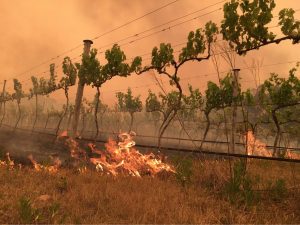
Fortunately for Chase and the other members of the Milton RFS, tragedy during the previous year’s bushfire season provided his brigade with a fortuitous space for reflection this season.
He explains that after the heart-breaking death in 2018 of New Zealand-born pilot, Allan Tull, who crashed his helicopter into a tree, waterbombing near Ulladulla, members of his brigade were the first respondents.
When they returned, to say they looked distraught, would be putting it mildly.
He recalls that they collectively all went and sat in a tool shed out behind the station to reflect and talk about what they had just witnessed.
Since then, the shed has been renovated into a quiet space with lounges and was used frequently during the summer.
‘I think we forget sometimes that we’re human. I broke down halfway through one of the fires. It was during one of the quiet weeks. A few of my mates took me down to the pub to have a drink and thank me for all that I was doing. I couldn’t have too many, cause the pager might go off and I’m on shift, but everything just got to me, the stress and the overwhelming situation the community was in and I just broke down in tears. These are people I’ve known all my life and I’m doing everything I can to try and save their homes.’
For retired pensioners Joe and Gail Firenze, sadly, the RFS, were unable to save their property and they became one of the 89 residents of Lake Conjola who lost everything in the fires.
‘We could see the flames from our balcony off in the distance. There was a north-westerly and it was moving away from us. Our house was made from brick, so I wasn’t too concerned,’ Joe remembers with a wry smile, as Gail places a reassuring hand on her husband’s shoulder.
‘We were more worried about our elderly friends from church down the road,’ Gail added. ‘Joe kept going down and assuring Bernie and Elaine everything would be ok, but if things did get worse, we’d come and pick them up.’
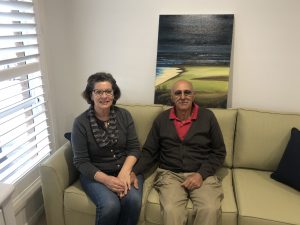
Unfortunately for the Firenze’s, things did get, worse; much worse. It wasn’t long before Joe spotted dark plumes of smoke billowing from their neighbour’s roof. They knew it was now or never. With only the clothes on their backs and a manila folder in hand containing their insurance details, the couple rushed 400 metres down the road to help their friends.
‘Gail asked the firey’s if they’d give us a hand helping the old fella in the car, because he couldn’t walk. It couldn’t have been more than fifteen minutes by the time we left our place and went to collect Bernie and Elaine. As we were driving up Kurrajong Crescent to get out onto the Princess Highway, I still can’t believe it, it was just fire everywhere. I’ve been in a few fires, but this was unlike anything I had ever seen. Left, right, didn’t matter where you looked. We couldn’t even see our house. It was like what you see on those TV ads, when they’re driving through the flames.’
“There was a bit of consternation there I suppose, but we weren’t concerned, mainly because we have a Christian faith and we believed that God would get us out of this in some way. The old fella, Bernie, he was sitting in the back and the whole time he was quoting scripture, “Be still and know that I am God.”
Despite being faced with a life or death situation, most can scarcely imagine, Joe promises neither he nor his wife were overly worried at any stage. Whether divine intervention or sheer luck, the Firenze’s and their friends made it to the Milton Showgrounds unscathed.
In the coming days, they would learn that while the houses either side of them were still standing, the house they had only moved into 13-months prior, and everything they owned, was little more than a pile of smouldering rubble.
‘I got out with this,’ Joe stated and points to the beige pants he is wearing, “and this cardigan. The shirt was given to me by the Red Cross, who were so, so generous. The volunteers really were the unsung heroes of this whole thing.’
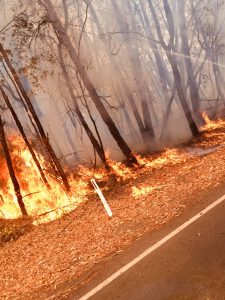
Non-government organisations proved to be invaluable services during and after the bushfires. The Red Cross, in particular, was providing homeowners and renters who had lost their primary place of residence, grants of up to 30-thousand dollars to help them get back on their feet and rebuild their lives.
‘We were given 20 thousand and were offered another round of payments, but we didn’t take it. Financially we’re alright,’ Joe assured. ‘Thankfully everything was covered and we were fortunate our insurance company paid us out as quickly as they did and we were able to get this place. It’s the ones who aren’t in as good of a situation as us that we keep in our prayers.”
What caught the couple off-guard the most, was the unmitigated acts of generosity by locals, eager to pitch in any way they could. Gail recalls going into a retail shop and being given new clothing, free of charge.
‘I’ll admit, I felt a little embarrassed. The store owner told me that people from all over town were coming in and donating money, sometimes as much as 100 dollars and telling her, “if people have come in and lost their house, put this towards whatever they need.” The generosity shown was overwhelming.’
With the fire season on the South Coast of New South Wales beginning one month earlier than the previous year, now starting on the 1st of September, the region has also implemented precautionary measures to help offset potential hazards. For instance, during the fire season, South Coast residents are prohibited from conducting private burns on their property without a permit.
This comes after the NSW Government accepted all 76 recommendations handed down by an independent inquiry in August, into the 2019-20 bushfires that concluded. This coincides with the increased hazard reduction that was undertaken during the winter months in known potential fire affected areas, in preparation, in case the worst should happen again.
Even with the added precautions being put into place, Gail confesses to still being on edge from time-to-time.
“There was a day a week or so ago, where I was home alone and it was particularly hot and really windy and that freaked me out a little bit. I would look out the window every now and then towards the mountains and just check and make sure I couldn’t see any smoke. So, the fear is still there a bit, I suppose. I know a lot of people who are worried about the coming months.”
RFS volunteer, Chase Organ, agrees. “There’s still a lot of bush left to burn out there. Hopefully not though, because if it’s anything like the last few months, it will be COVID safe firefighting.’
Not even the RFS has been able to escape the clutches of the Corona Virus and the new measures it has inflicted on everyone.
Chase explains that they’ve had to limit the amount of crew they can take out on jobs and even if it was a pressing emergency, they could not send as many people as they would like. Fire trucks that would usually fit 6 people now need to be limited to 4, with RFS members sitting at the far corners of the truck to ensure social distancing is followed.
While the South Coast residents are looking towards the future, the horrors of the last 12-months keeps them looking over their shoulder.


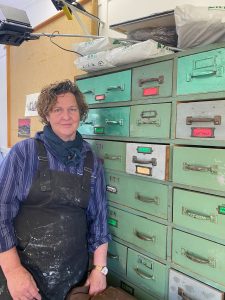
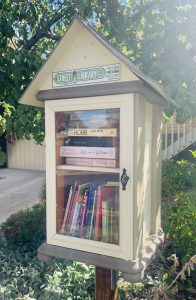
Be the first to comment!